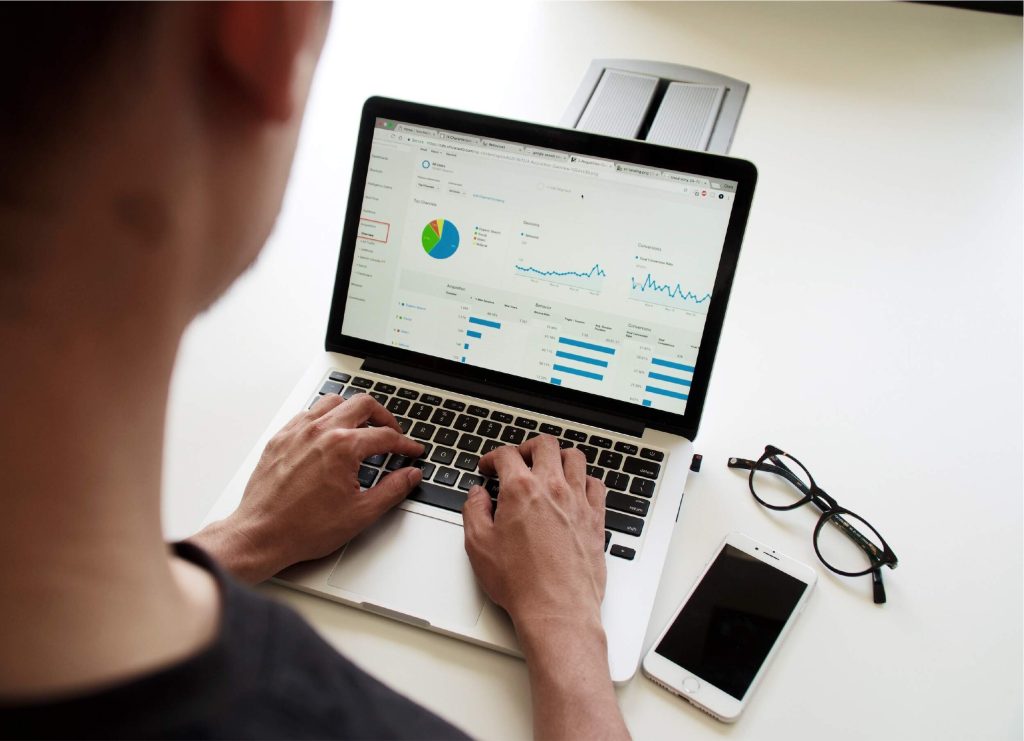Media analysis – you’ve probably heard this term at least once if you’re into digital marketing. You might have a vague idea that it could help with your PR actions. But how exactly can it influence your strategy and make a difference?
💡 Read Media Monitoring: The Ultimate Guide
The web is full of generic answers to these questions that can’t help you plan your marketing. So, to make it handy for you, we’ve gathered information from academic studies and the industry, then sprinkled them with what we know from our experience. This guide will help you understand what media analysis is, step-by-step. So fasten your seat belts and get ready to learn the hows and whys of media analysis!
What is Media Analysis?
Media analysis is one of the essential elements of a strong marketing strategy. To truly understand how it works, let’s start with defining what it is and why it’s so crucial for the success of any business.

A short history of media analysis
Is media analysis a new tactic? Although it may seem so, the term “media content analysis” was actually introduced in 1927 by Harold Lasswell. Back then, it was a systematic method to study mass media – mostly press, television, and radio.
It has evolved over the years, and today media monitoring is a complex strategy. It also includes a thorough analysis of digital content including websites, social media, and even visuals.
To cut a long story short, marketers have been performing media analysis for years. But they had to spend most of their time looking for brand mentions manually. Nowadays, with information overload and millions of websites, it would be impossible to search for company mentions and analyze them one by one. That’s why media analysis automation entered the game.
Media analysis or content analysis?
- Content analysis is a tactic used for gathering content and analyzing it. What’s important to mention is that “content” is a broad term related to any message that can be communicated. It refers to words, pictures, symbols, and even ideas or themes. Text in this interpretation means anything visual.
- Media analysis is a division of content analysis that focuses on the media environment as it sounds. It combines media monitoring with interpreting and evaluating the gathered data. It’s based on searching for any kind of information regarding your brand, often by following keywords.
Media analysis is closely associated with other terms that you might need to get familiar with, such as:
- Brand monitoring – the process of tracking different channels to find mentions of your brand and collecting that data; it shows you what people and the media are talking about, plus when and where they are doing so.
- Social listening – reacting to the data you’ve collected, evaluating and actively improving your strategy according to insights into your customers’ behavior; it answers the question “why are people/the media saying this?”
- Competitor analysis – looking for mentions about your competitors and evaluating such data to see how well your brand is performing in comparison; what your opponents are doing better and how you can take advantage of their mistakes.
In a nutshell, media analysis lets you create an accurate perception of your brand based on real data instead of just guesswork.
How to Perform Media Analysis
As said, media analysis isn’t a new concept. However, it has evolved into one of the must-have elements in most PR and marketing strategies with the development of automation systems. These days, with special tools like Determ, companies are able to track mentions continually.
Let’s see what has changed over the years and how exactly media analysis works now.
Old school ways performing media analysis
The first important thing is that before automation, media analysis was a manual process. That meant hours of tedious work and paying salaries to people who would spend all day long looking for brand mentions. Along with this, the probability of mistakes was much greater – after all, we’re only human.
Of course, back then, there were also fewer media channels, so traditional monitoring was narrowed down to:
- Newspapers
- Magazines
- Radio
- Television
If a company wanted to streamline their media analysis, they had to outsource it to an agency. However, not many businesses had the finances to afford this.

The invention of the Internet and its rising popularity changed the media analysis processes forever. Marketers and PR experts had to scroll through more and more online magazines, forums, social media, and eventually any other kinds of pages. Automation systems were a breakthrough.
Quantitative vs. qualitative analysis
Basically, there are two methods of media analysis: quantitative (based on statistics) and qualitative (premised on the interpretation of gathered data). Ideally, the whole process should combine them both.
Each of these methods is connected to particular elements of media analysis.
Quantitative analysis 📈
- media monitoring (keyword tracking)
- statistics (visualizing gathered data on graphs)
- clip count (total count of mentions)
- circulation (total number of copies distributed for each publication)
- media segmentation (breakdown of media sources)
- share of voice (a measure of reach that shows the share of exposure for selected topics).
Qualitative analysis 🔑
- focus on providing more industry insights through interpretation of content
- contextual factors are important (e.g. target audiences, media sources) as they enable experts to interpret the data according to the circumstances
takes into account that content is polysemic (open to different interpretations depending on the reader)
- social listening is linked to this method, as it dives deeper into the intentions and motivations of users who wrote a particular comment, etc.
Both methods are linked – quantitative research gathers data that researchers are able to interpret by qualitative analysis. That’s why it’s impossible to choose which tactic is better – they are complementary, like Yin and Yang. By implementing elements from each of them, you can have the best of both worlds. Combine the advantages and minimize the cons of using just one method.
Media analysis – the new approach
The meaning of such analysis across online channels is rising with the growing influence of social and digital media on consumer choices. In the world of Big Data, where large amounts of information are produced daily across millions of virtual channels, a fresh solution had to be discovered.
Here’s how media analysis is performed today thanks to robust software systems.
What Are the Basics of Media Analysis?
Like with anything in business, to perform media analysis effectively, you need to specify your goals and the methods that will lead you to achieve them. To build such a strategy, you need to define what phrase you would like to track and why each keyword is important to you.
In general, every media analysis must have a precise :
- subject (who?)
- time (when?)
- place (where?)
- goals (why am I tracking this keyword?)
After all, only if you set the right keywords to follow will you be able to gather relevant data, interpret it, and use it to develop your business consciously.
Media analysis on steroids in the world of Big Data
Big Data entails large data sets that are impossible to comprehend for a single person. Performing media analysis via software systems is the only way to find what you need in this sea of information. It’s a vicious circle – the more mentions you get, the more data is produced. So at the end of the day you have to gather and evaluate more information.
Software systems like Determ allow you to follow keywords and phrases that are influential for your business.
In case you’re wondering how the new approach to media analysis works, here it is what it allows you to do at a glance:
- Define various keywords (single words or whole phrases) that you would like to follow, such as your brand name, product or service names, important people at your company who are active in the media (e.g. CEO).
- Exclude phrases that you don’t want to follow, which is vital for the effectiveness of this process because if you track too many irrelevant phrases then it might be impossible to compare and draw valuable conclusions from that data.
- Track what your competitors are doing and what is being said about them.
- React to positive and negative comments regarding your brand as quickly as possible.
- Perform sentiment analysis to better understand the emotions of people who leave comments about your brand and react to these mentions appropriately.
Plus, you can control every facet of the process because you set the keywords manually and the automation system does the rest. Finally, you will obtain data about your consumers, their behavior, and conversions.

Analytics goes beyond articles
Maybe you’ve noticed that we’ve focused on “content” rather than “text” in this article. That’s because tracking mentions across digital channels means going beyond simple blog posts on magazine or blog sites. Thanks to the possibilities provided by the internet, people aren’t just passive observers but active users.
Therefore, the new method of media analysis includes:
- Comments – your customers (existing or potential) can add recommendations, ask questions regarding your company’s activities, or add a negative note regarding your brand. That’s why tracking social media and online forums, as well as comment sections across other platforms, is essential.
- Video descriptions – they help with SEO and finding whenever someone mentions your brand in their YouTube video if added in the description.
- Brand mentions across the web – with a powerful tool, you can track keywords even on websites that you previously didn’t even know existed.
Benefits of Performing Media Analysis
Digital media monitoring is now crucial for any brand present in the online world to reveal patterns and trends. It enables companies to analyze insights and eventually leads to better decision making and improved strategic moves. This way, you can know that you base your actions on real evidence rather than guesswork and hence mitigate the risk of throwing your money down the drain.
Why is media analysis key?
As early as 1952, Berelson suggested the main purposes of content analysis is to:
- Describe substance and form characteristics of message content
- Make inferences to producers and audiences of content
- Predict the effects of content on audiences.
Today we’re able to draw even more conclusions thanks to automation systems that provide us with precise data. To name just a few more advantages of media monitoring that your company can benefit from:
- Tracking media mentions 24/7 across every existing channel on the web
- Comparing data from different periods to see how well your brand performed during them and how customers perceive it
- Identifying critical issues that should be improved
- Gaining a better understanding of your audience, their experiences with your brand, and their emotions
- Having an overview of your competitors
- Setting standards for future campaigns because media analysis allows you not only to evaluate previous actions but also lets you find new opportunities and eliminate threats, thanks to which you will have better control of your marketing budget
- Obtaining competitive insights thanks to Share of Voice
- Preventing and responding to crises
- Tracking user-generated content (crucial for promoting authenticity, building trust, and driving purchasing decisions)
- Identifying journalists and media outlets who mention your company
- Combating misinformation and propaganda
- Finding and interacting with influencers
- Discovering how many people your campaign has really reached (for more thorough campaign analytics)
Your reputation depends on your brand image
The media (especially digital, the so-called “new media”) has a huge impact on various spheres of human life. They are able to change not only people’s understanding of the world around them, but also control, challenge, or even expand it.
What does this mean to your company?
Your customers might judge your brand based on comments they read about your products or services. Nowadays, everyone who has Internet access (and that’s a whopping 4.66 billion active users!) can leave a review about your company. According to experts like Philip Kotler, more people believe the opinions of others rather than the advertisers. This means that taking care of your brand reputation is vital for building a positive company image.
Active social listening is crucial to maintain a positive brand image. According to the studies, 54% of customers share bad experiences with more than five people. Moreover, 92% trust recommendations from friends. Also, Word Of Mouth Marketing brings in 5 times more sales than paid media!
Media analysis offers the answer to the question: ‘Why?’ Knowing it gives you the chance to see what is working and what isn’t so that you can replicate successes.
Go from Theory to Practice
Now that you know what media analysis is, how it’s done, and why it matters, you have the educational background to put your money where your mouth is.
However, it’s always better to try out any new solution and strategy before you go all in. You can take Determ on a test ride – just make sure to book a demo and our experts will take it from there.